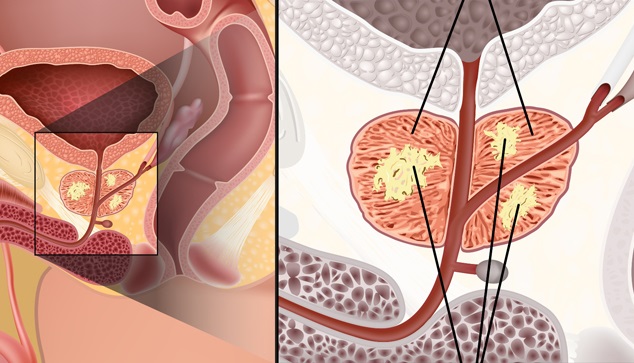Skin Allergy: Symptoms, Causes, Types and Treatment
Skin allergy is an inflammatory reaction that arises due to an exaggerated response of the immune system to substances such as deodorant, latex, animal hair, food, sun or cold, or insect bites, leading to the appearance of symptoms such as redness, itching and white or reddish dots on the skin of any region of the body, such as hands, feet, face, arms, armpits, neck, legs, back or belly, for example.
There are different types of skin allergies, such as urticaria, contact dermatitis, or atopic dermatitis, for example, which can be controlled by avoiding exposure to the substances that trigger them, or by treating them with antihistamines or corticosteroids. in the form of tablets or ointments, recommended by the dermatologist or allergist.

In severe cases of skin allergy, symptoms of anaphylaxis may appear, such as swelling in the mouth, tongue or throat, difficulty breathing, and you should seek the nearest emergency room immediately, as this can put your life at risk. In these cases, medicines are normally administered directly into the vein or muscle, for example.
Skin allergy symptoms
The main symptoms of skin allergies are:
- Intense itching;
- Redness;
- Peeling;
- Irritation;
- Reddish spots;
- White polka dots;
- Dryness of the skin;
- Crusts or cones;
- Burning or burning sensation;
- Change in skin sensitivity.
These symptoms may appear a few minutes or even hours after contact with the allergen, and it is important to wash your skin with plenty of water and soap with a neutral pH as soon as symptoms appear.
In more serious and less common cases, skin allergies can also lead to the appearance of serious symptoms of an anaphylactic reaction or anaphylaxis, such as swelling in the eyes and mouth, difficulty breathing and discomfort in the throat, in which cases it is very important to seek medical attention immediately. or the nearest emergency room, as it can be life-threatening.
How to confirm the diagnosis
The diagnosis of skin allergy is made by a dermatologist or allergist through the evaluation of symptoms, blood tests or the allergy test, which is carried out in the doctor’s office by applying different substances to the skin, to check the appearance of symptoms.
Types of skin allergies
The main types of skin allergies are:
1. Urticaria
Urticaria is a type of skin allergy that can be caused by insect bites, medications, allergies to foods such as peanuts, eggs or shellfish, allergies to clothing fabric, pollen, latex, sweat, or temperature variations. , such as extreme heat or cold, for example.
Typically, hives symptoms last up to 24 hours, disappearing without leaving marks or scars. However, the spots on the skin can appear again in other parts of the body, remaining for around 6 weeks, this type of hives being called chronic urticaria.
2. Contact dermatitis
Contact dermatitis is a type of skin allergy that appears after contact with an irritating substance or object, such as cosmetics, perfumes, soap, cleaning products, jewelry, plants or dust, for example.
Furthermore, contact dermatitis can also be caused by feces or urine, and is common in babies.
3. Atopic dermatitis
Atopic dermatitis, also known as atopic eczema, is a chronic allergic skin reaction, most common in babies and children up to 5 years old, but can also occur in adults, generally caused by various factors, such as cold or heat, smoke, pollution , highly concentrated detergents and washing soap and contact with synthetic fabrics, for example.
This type of skin allergy is most common in the folds of the arms and knees, but can also appear on the cheeks and near the ears in babies, or on the neck, hands and feet in adults.
4. Skin rash
Skin rash, also known as exanthema, can appear due to contact with irritating substances, such as detergents, rubber or latex or even viral infections such as dengue or Zika.
Possible causes
Skin allergies can have several causes, which include:
- Insect bites;
- Extreme heat or cold;
- Sweat;
- Bijou;
- Medicines, such as antibiotics, phenytoin, carbamazepine or lamotrigine;
- Foods, such as peanuts, eggs, and seafood;
- Plants or animal hair;
- Dust or pollution;
- Clothes, belts or some types of fabric, such as wool or jeans;
- Cleaning products, such as detergent or laundry soap;
- Materials such as latex or rubber;
- Irritant substances, such as beauty and cosmetic products, makeup, perfume, shampoo, deodorant, shower gel, soap, wax or even depilatory cream.
Skin allergies can manifest themselves by causing different symptoms, and it is very important to be able to identify the cause so that it can be avoided.
How the treatment is carried out
The treatment of skin allergies must be carried out under the guidance of a dermatologist or allergist, and varies according to the cause, the type of skin allergy and the intensity of the symptoms.
The main treatments for skin allergies that may be recommended by your doctor are:
1. Use of ointments
The ointments for skin allergies that may be recommended by your doctor are:
- Corticosteroids, such as hydrocortisone or mometasone;
- Antihistamines, such as dexchlorpheniramine maleate;
- Immunosuppressants, such as pimecrolimus or tacrolimus.
These ointments help reduce inflammation in the skin, relieving symptoms such as itching, redness or swelling of the skin.
2. Using pills
Skin allergy pills are generally recommended by a doctor when the use of ointments has not been effective in improving symptoms.
Generally, the most recommended pills are antiallergic ones, such as loratadine, cetirizine or hydroxyzine, or corticosteroids, such as prednisone or prednisolone. Furthermore, depending on the type of skin allergy, the use of immunosuppressants may be indicated, such as cyclosporine, azathioprine, mycophenolate or methotrexate, for example.
These remedies can also be indicated in the form of syrups or drops and should only be used under medical advice.
3. Moisturizers
Moisturizers may be recommended by your doctor to hydrate and maintain skin moisture, relieve dryness, the feeling of rough skin, itching or skin irritation.
The most recommended moisturizers for skin allergies are those without perfume, neutral and with a greater quantity of oils, such as Fisiogel AI Stiefel Moisturizing Body Lotion, Stelatopia Mustela Bebê children’s moisturizing cream or HidraKids Biolab Moisturizing Children’s Lotion, which should be applied immediately after bathing , with the skin still damp.
Home remedy options
Some options for home remedies for skin allergies are creams or lotions with a calming action, such as chamomile or lavender, to relieve discomfort and calm skin irritation, also helping to maintain skin hydration.
Furthermore, thermal water is also an excellent option to use in these situations, as it hydrates the skin and reduces itching and irritation.
The use of these, or any other home remedies, should not replace the remedies recommended by your doctor, but is simply a way to help alleviate symptoms more quickly.
Read Also: 9 Main Causes Of Itchy Body – (What To Do)
Is skin allergy more common during pregnancy?
Skin allergies during pregnancy can occur due to hormonal and immune system changes that occur naturally during this period, which can make the pregnant woman more sensitive to the emergence of an unwanted skin allergy.
In these cases, it is recommended that you try to soothe your skin with creams or lotions that help alleviate discomfort and skin irritation, and it is recommended that you consult a dermatologist or allergist as soon as possible.
Generally, skin allergies during pregnancy do not harm the baby, however, if the allergy symptoms are severe, it is recommended to go to the emergency room or hospital.







